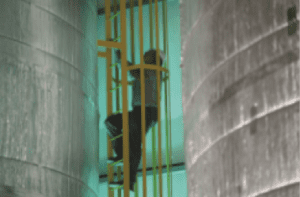Understanding how advanced process-control tools, such as edge computing, fit in with an overall digitalization strategy will help manufacturers to see sizable operational and financial performance improvements
Today, many companies in the chemical process industries (CPI) are moving toward a digitalization strategy to improve process unit management. They are seeing improvements in throughput, product quality and reduced processing costs that increase overall profitability. Digitalization can also reduce costs by improving raw material yield, decreasing maintenance costs per unit volume of production and reducing working capital within the supply chain.
Digitalization is based on the use of digital (electronic) information obtained within the process production unit to analyze process performance and provide specific feedback to multiple and disparate working groups throughout an organization (Figure 1). Modern automation, consisting of measurement instrumentation to provide process data and process control systems, which may turn raw data into useful information, enables digitalization by being the information source.

FIGURE 1. Operators, engineers and managers alike can benefit from digitalization activites in multiple areas throughout an enterprise
Where to start
When developing a digitalization strategy, it is important to start with the definition of the business purpose prior to implementing a technology solution. The driving force for change must come from company leaders to produce a better chance for success. Defining the business purpose sets the information that needs to be collected from the process units versus collecting thousands of indiscriminate data points.
Within the CPI, the function of gathering process-related information is achieved through existing and communicating process sensors, process control systems and data historians. Process measurements from existing instruments used for process control provide much of the information. The addition of a few non-control measurements completes the data requirements to feed the analysis tools and calculate financial performance. Obtaining these new measurements is an excellent application for wireless instrumentation.
Efficient edge computing
Companies can use advanced analytics to extract management and process information from the key data collected by process historians. This information can then be used to improve how plants are run and to make well-informed and speedier decisions across the full range of a company’s business processes.
Although digitalization has been linked to big data and complex data analytics, it does not need to be. Edge computing — bringing data-analysis tasks closer, in this case, to the process rather than to the enterprise resource planning (ERP) level — delivers economy to digitalization. Edge computing can be performed in the process control system, either within a modern distributed control system (DCS) or in an application station. Edge computing can even be accomplished in “smart” field devices, where strong analytical tools reside to monitor device health.
The measurements from devices to the process control system contain the information required for online, real-time process performance calculation and reporting. Calculating information at the automation level, rather than a centralized location, such as the ERP, makes sense because real-time process performance information is the basis for operational optimization.
Performance information may include raw material and energy inputs into the process, as well as product and waste stream flows out of the process. Adding raw-material and energy-cost information to process measurements allows calculation of profit flow in the process. When this calculation is done in real time at the source of the information, process changes can be made more quickly to take advantage of the moment.
The process control system operator interface properly displays information to operators who may take real-time actions versus waiting for end-of-the-month cost reports. This puts the information and the action with the user, which is the claim of edge computing. Additionally, it is very likely that new control strategies will be required to take actions to correct less-than-optimal performance. Having key information within the process unit will expedite the implementation of improvements.
Modernization and digitalization
Because the process control system is an integral part of the digitalization infrastructure, to get full benefits of a digitalization strategy it is important to have a modern control system and updated instrumentation and control points. The modern control system capabilities, such as flexibly adding measurement inputs, using advanced process control strategies and easily modifying control strategies, are key to capturing and implementing performance improvements.
Years ago, chemical processes were designed with a limited amount of measurement and control points. Only those points that were necessary to control the process and meet production guarantees were included. Now, efficient and optimal operations — measured by smart instrumentation and control points — are required to stay competitive.
An environment of continuous improvement through process optimization can be fostered by digitalization where performance measurements are made and analyzed in smart field devices or the modern process control system. Online performance monitoring provides insight to process operations that are not performing at ideal conditions. Beyond the operators having the proper information to act quickly on poorly performing operations, adding historic profitability measurements provides the financial data to justify improvement projects.
Proper real-time monitoring of process performance will identify areas for improvement. While some improvements may require process equipment modifications, others may be accomplished with better process control. This includes developing more complex control strategies, including advanced control for interacting process control loops, model predictive control, loop monitoring, adaptive tuning and quality prediction.
Once control modernizations are implemented, it is very important for the process to remain at optimal conditions. Process conditions change, and chemical processes exist in harsh environments that cause equipment corrosion and surface coating. Beyond process performance monitoring, the ability to continuously monitor the control strategy, including control-loop performance and instrument and control value diagnostics, is vital for efficient operations. And this too can be accomplished in a digital environment.
Digitalization concepts may go beyond just providing improved process control. Facility operations improvements in terms of automating quality, maintenance and required documentation workflows will improve productivity, efficiency and effectiveness of an organization’s record-keeping and decision processes.
Logistics and supply chain
Chemical companies are beginning to put a larger focus on initiatives to implement digitalization activities to improve production and supply-chain activities.
Critical elements for good supply-chain management include accurate inventory measurements for raw materials, intermediate and finished products and knowledge of work-in-process materials and equipment states. Accuracy can become an issue when the frequent manual input to inventory and work-in-process databases is required by an already taxed operator.
To reliably receive accurate inventory measurements and knowledge of work-in-process materials and equipment states, information should be gathered and communicated in digital form — with little intervention from personnel and less potential for error. Key measurements and process-unit activity data are more easily accessible when using a modern process-control system.

Figure 2: For strong supply-chain optimization, the process control system and a digitalization strategy work hand-in-hand to automate the smooth flow of key information (shown in blue) as the physical chemical plant operates (shown at the top in green)
A modern process-control system assists with information integration (Figure 2) by providing additional inventory and process flow information to the plant business systems eliminating additional work for the operator. Wireless instrumentation plays a key role in this environment by simplifying and reducing installation costs for many measurements that were once deemed too expensive to gather.
Safety, security and environment
Plant managers frequently report that safety is their number-one priority. Almost all safety and environmental incidents are preventable. Most followup reports attribute the failures to a combination of human error and either a measurement failure or a lack of measurement of a key process variable.
A platform that can actively handle abnormal situations can greatly reduce safety and environmental incidents. Monitoring a combination of key process variables provides early detection of potential incidents. This allows operators, or the process control system itself, to take early corrective actions to alleviate the situation well before an incident (Figure 3).

FIGURE 3. Maintenance activities can be more effectively planned using the insights provided by advanced digital tools
Many chemical process units contain environmental protection equipment whose performance must be monitored. Automated process measurement and historical performance monitoring can fulfill the requirements, limiting manual activities.
Capturing plant data prior to and during an abnormal situation, incident or equipment failure provides operational value. Having the accessible and easily analyzable data strengthens troubleshooting and helps prevent future safety and environment incidents.
Moving ahead for value
The strategic implementation of digitalization will provide sizable opportunity for operational and financial performance improvements.
Current control practices for CPI facilities make much of the required process information already available and centralized within the control system. Some additional measurements are normally required to monitor process performance and calculate profitability in real time. Fortunately, wireless instrumentation may be used for these measurements, so the implementation costs may be significantly reduced.
To obtain the full value from digitalization, a modern process-control system is required to communicate easily with the business systems and make it easy for operators to see the information and act immediately on less-than-desirable conditions. The control system must be flexible and easy to use to implement new control strategies, to optimize process operations, and then to monitor process and control equipment performance to remain at optimal conditions.
The values associated with digitalization are real and significant. Digitalization provides sound business reasons to modernize existing automation systems. A modern automation system becomes the infrastructure to start a process of continuous improvement aimed at optimizing processes to do the following:
- Increase throughput
- Achieve higher raw-material yields
- Reduce use of consumable chemicals
- Lower energy consumption
- Provide more effective maintenance and lower costs
Chemical company executives and operational management teams are realizing how digitalization may be applied to multiple areas throughout the business, including process operations, supply chain, and maintenance management. Digitalization is the foundation that positions them to obtain even move value in operational, cultural and behavioral benefits. ♦
Edited by Mary Page Bailey
Author

John Dolenc is a principal engineer and modernization consultant for Emerson Automation Solutions (Email: John.Dolenc@emerson.com). He focuses on developing business case and conceptual engineering studies that assist customers in the chemical process industries with increasing profitability through the application of modern automation technologies.